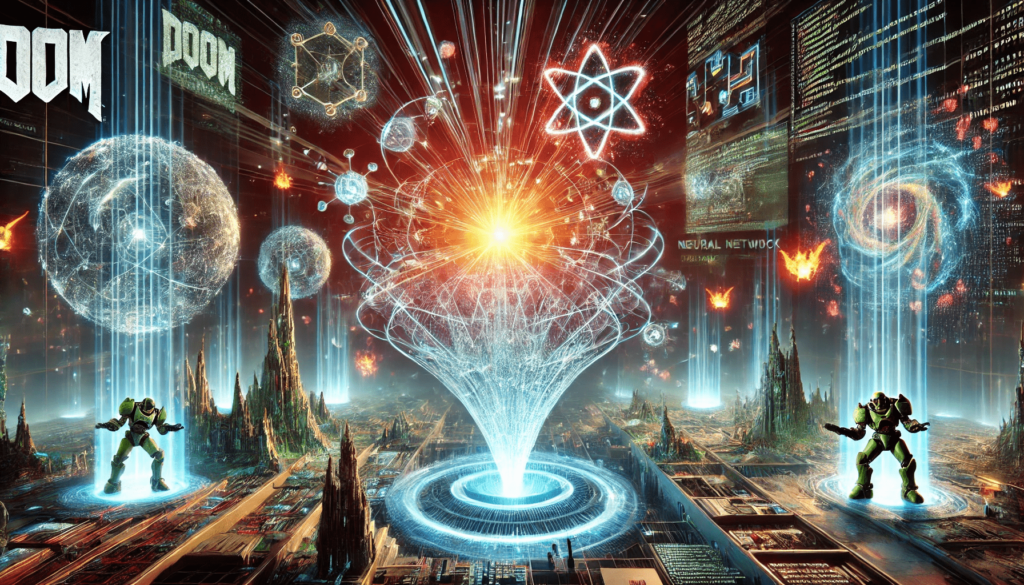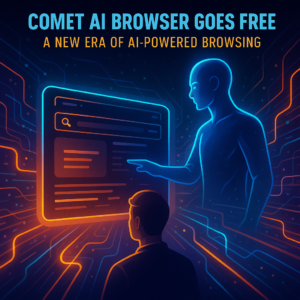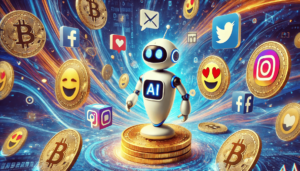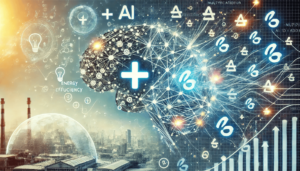The Future of Video Games: Neural Networks and Real-Time World Simulation

An illustration depicting a neural network generating a video game environment in real-time, showcasing the potential of AI in transforming digital content.
- How is AI transforming the traditional process of video game development?
- What are the potential implications of AI-generated content for the future of digital media?
- What challenges and ethical considerations arise from the use of neural networks in real-time content creation?
The intersection of artificial intelligence and entertainment has always been a fertile ground for innovation. However, recent developments have catapulted this intersection into a new era—one where video games and potentially all forms of digital content are no longer just pre-programmed experiences but are dynamically generated in real time by neural networks. In a recent video by Matthew Berman on his YouTube channel, he discusses a groundbreaking advancement from Google Research that showcases the potential of AI in the future of video gaming.
The Dawn of AI-Generated Video Games
The concept is as revolutionary as it is mind-boggling: a video game created not by traditional programming methods but by a neural network. Berman highlights a paper released by Google Research detailing how they have successfully rendered the classic game Doom in real-time using a neural net. What makes this achievement so astounding, is that the game’s environment, mechanics, and even the logic of gameplay are not coded in the conventional sense but are generated dynamically by the AI as the game progresses.
This method of game creation challenges the very foundation of how we think about content creation in the digital world. Traditionally, video games are meticulously crafted by teams of developers who code every aspect of the game—from the physics engine to the AI that controls enemy behavior. In contrast, a neural network approaches the task by “learning” how to create and manage these elements on the fly, responding to the player’s actions in real-time and generating the world as needed.
The Implications for the Gaming Industry
The implications of this technology for the gaming industry are profound. Imagine a future where every gamer has a unique experience, tailored specifically to their preferences, playstyle, and even their mood at the time of playing. With neural networks generating game content in real-time, the possibilities are virtually limitless. No longer would gamers be constrained by the limitations of pre-designed levels or narratives. Instead, they could explore worlds that are as expansive and varied as their imaginations allow.
Moreover, this technology could democratize game development. Currently, developing a AAA game requires massive resources, including large teams of developers, designers, and artists. However, with AI-generated content, smaller teams or even individual creators could potentially produce high-quality games that rival those of the biggest studios. This shift could lead to a renaissance in indie gaming, where creativity and innovation flourish without the constraints of budget and manpower.
The Future of Personalized Content
Berman’s discussion extends beyond gaming, suggesting that this technology could also revolutionize other forms of content, such as TV shows and movies. He posits that just as games could be personalized for individual players, so too could movies and TV shows be customized for individual viewers. Imagine watching a film that adapts its narrative based on your reactions, preferences, and even your emotional state. This concept of “audience of one” content creation is both exciting and, perhaps, a little unsettling.
The potential for AI to create highly personalized content raises several questions. How will this impact the collective experience of media consumption? Will shared cultural moments—those times when everyone is talking about the same show or game—become a thing of the past? And what about the ethical considerations of AI-generated content that can be so precisely tailored to an individual’s tastes? Could this lead to even more potent forms of echo chambers, where individuals are only exposed to content that reinforces their existing beliefs and preferences?
The Challenges and Risks Ahead
While the technology is undoubtedly impressive, it is not without its challenges. As Berman notes, the neural network’s real-time generation of Doom is not flawless. There are instances where the game exhibits glitches—characters disappearing and reappearing, and numbers on the screen changing without reason. These issues highlight the nascent stage of the technology and the need for further refinement.
Moreover, the broader application of this technology raises significant ethical and security concerns. As neural networks become more adept at creating realistic simulations, the line between reality and virtual worlds could blur. This could lead to scenarios where it becomes difficult to distinguish between human-generated and AI-generated content, with potential implications for misinformation and manipulation.
Furthermore, as Elon Musk hinted in his response to the video, there is the possibility of using neural networks to simulate the real world. Tesla, with its vast repository of data collected from its fleet of vehicles, could theoretically reproduce real-world environments in a virtual space. While this could have applications in areas like autonomous vehicle testing or urban planning, it also opens up the possibility of creating hyper-realistic simulations that could be used for less benign purposes.
The Path Forward
As we stand on the cusp of this new era in content creation, it is crucial that we approach it with both excitement and caution. The potential benefits of AI-generated content are immense, offering new ways to entertain, educate, and engage. However, we must also be mindful of the risks and challenges that come with this technology.
Collaboration between technologists, ethicists, and policymakers will be essential in navigating these challenges. There will need to be clear guidelines and regulations to ensure that AI-generated content is used responsibly and that the potential for harm is minimized.
In conclusion, the developments discussed in Matthew Berman’s video are just the beginning of what could be a transformative period in the history of digital content creation. As neural networks continue to evolve, we can expect to see even more innovative applications that push the boundaries of what is possible. However, as we embrace this new technology, we must also remain vigilant, ensuring that its development is guided by principles of fairness, transparency, and respect for human creativity.
This new frontier offers a tantalizing glimpse into the future, where content is not just consumed but co-created by the very technology that delivers it. The question is, are we ready for what comes next?




